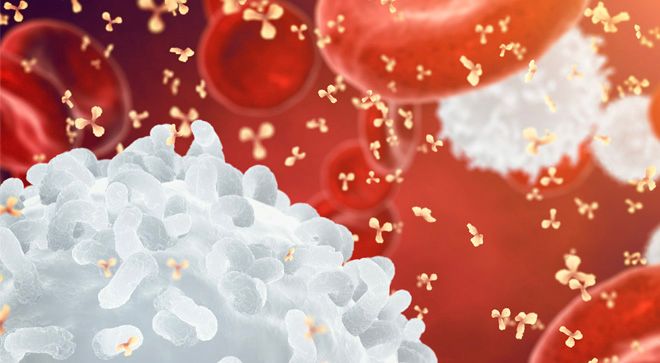Article
High-Dose Chemotherapy Regimen Shows Good Response in Certain Patients with Mantle Cell Lymphoma
Author(s):
Patients with mantle cell lymphoma who were eligible for stem cell transplant saw a 97% overall response rate to a three-drug regimen, according to findings from two clinical trials.
Patients with mantle cell lymphoma who are eligible for stem cell transplant should be treated upfront with a high-dose chemotherapy regimen, according to one expert.
A pooled data analysis of two clinical trials showed a 97% overall response rate and 90% of patients saw no signs of cancer after being treated with Treanda (bendamustine) and Rituxan (rituximab) plus high-dose cytarabine followed by autologous stem cell transplant, which uses a patient’s own stem cells.
Treanda and cytarabine are both types of chemotherapies while Rituxan is an antibody therapy that targets and attaches to the CD20 protein found on the surface of blood cells.
In addition, the researchers noted an overall survival rate of 92% and the three-year progression-free survival, or the time a patient’s disease doesn’t worsen, or death occurs, was 83%.
“This has been our standard regimen for the last six years at Dana-Farber Cancer Institute and the outcomes look excellent. For patients who are treated outside of a clinical trial, this is a good option and it seems to be well-tolerated and is highly effective,” Dr. Reid W. Merryman, an instructor of medicine at Harvard Medical School and a medical oncologist at Dana-Farber Cancer Institute, both in Boston, said in an interview with OncLive®, a sister publication of CURE®.
Side effects commonly seen in hematology were experienced, Merryman explained, including cytopenias and neutropenia — about 15% of patients had febrile neutropenia. Although there weren’t any induction-related deaths, two people died related to posttransplant complications.
Over the past decade, treatment for patients with mantle cell lymphoma has changed dramatically, Merryman noted. For instance, two randomized clinical trials examined the use of Rituxan, cyclophosphamide, doxorubicin hydrochloride, vincristine sulfate and prednisone, more commonly known as R-CHOP versus Treanda and Rituxan as a frontline treatment for patients with mantle cell lymphoma. Both trials found that the Treanda/Rituxan regimen improved outcomes compared with R-CHOP, Merryman explained.
“Over the last 10 or 15 years, there have been a lot of different regimens that included high-dose cytarabine, which was studied as part of a randomized trial and suggested that its addition to induction therapy for patients with mantle cell lymphoma improved outcomes,” he said.
Based on this, researchers at Dana-Farber conducted a trial to study this between 2012 and 2014. Researchers from Washington University School of Medicine in St. Louis then too looked at a similar regimen. These were the data used in the pooled analysis.
“The idea for this trial came from some of that earlier research,” Merryman said. “First, BR (bendamustine/rituximab) might be a better chemotherapy backbone than R-CHOP in this disease. Secondly, the addition of high-dose cytarabine might improve outcomes.”
For patients who are not eligible for transplant, Merryman noted that there have been encouraging outcomes with cytarabine and Treanda/Rituxan. However, this is not standard of care yet as not enough trials have been done.
Overall, he feels the Treanda (bendamustine) and Rituxan (rituximab) plus high-dose cytarabine regimen should be studied more and explained that some trials are even looking to the addition of Calquence (acalabrutinib), a Bruton tyrosine kinase inhibitor, to see if this would also improve outcomes for patients with mantle cell lymphoma.




